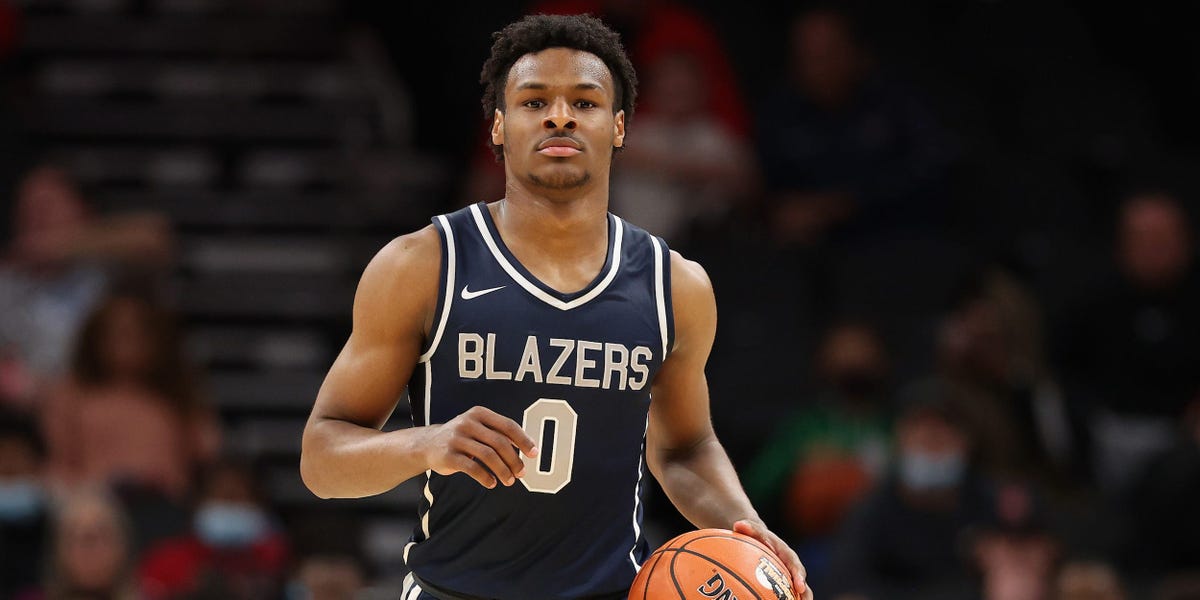- Freshman athletes are earning twice as much per NIL deal than other college athletes, according to Opendorse.
- The NIL marketplace’s new report also shows collectives funded by donors are dominating spending.
- Here are other key takeaways from the second year of NIL.
NIL, short for name, image, and likeness, celebrated its second birthday on July 1, marking an era that has opened up new doors for student-athletes to make money.
A new report from NIL marketplace Opendorse shows massive investment in the past year from “collectives,” or donor-funded groups that help athletes broker deals and pay them handsomely for events like meet-and-greets. Those collectives have boosted earnings for freshmen and other college athletes.
Opendorse estimates NIL market spending hit $1 billion in year two and will reach $1.17 billion next year, thanks in part to collectives.
Collectives are a driving force in the NIL marketplace because they offer big payouts to student-athletes, said Opendorse’s NIL and business insights manager Braly Keller.
“There’s a lot of posts and activity and work being done on the commercial side compared to collectives,” Keller told Insider. “But on the flip side, the money associated with the activities that are done by collectives is significantly higher.”
Collectives made up only 19.4% of all NIL activities on Opendorse’s platform from July 1, 2022 to June 5, 2023, but accounted for 79.9% of the compensation, according to the report.
Compare that to the first half of 2022 when Opendorse wrote that collectives on its platform had committed to providing upwards of $35 million to student-athletes.
Here are three other takeaways from the new Opendorse report, which analyzed NIL transactions on Opendorse’s platform from July 2022 to June 2023 compared with the previous year:
1. Freshmen saw a big jump in earnings
Freshman athletes earned 521% more per NIL deal than they did the previous year, Keller said. While seniors completed the most NIL activities — and all grade levels doubled how many deals they had from the previous year — the report shows the freshmen brought in more than twice as much money from each deal than the other grade levels.
A number of factors led to the spike in earnings for the freshman class. Schools educating their students about NIL made an impact, Keller said, as did learning about what worked for older students during the first year of NIL.
Collectives created more opportunities for student-athletes after being embraced by schools following October guidance from the NCAA that allowed athletic departments to recognize the groups.
For example, Ohio State University’s five-star football recruit Brandon Inniss, who is counted in last year’s data, signed in May with one of the school’s collectives, The Foundation. The next day, he posted thanking The Foundation alongside his new Dodge Charger.
“I think that influences incoming freshman as they arrive on campus,” Keller said, “and there is a bit of an expectation that you always heard about this collective.”
High schoolers are also heading to college with more information about building their brands, and several are already profitable in the space. In this year’s incoming class, Nike and Beats by Dre both signed University of Southern California’s Bronny James, whose $6.7 million NIL valuation leads all college athletes. Duke University incoming freshman Jared McCain has made an estimated $1.2 million through partnerships with companies like Champs, Crocs, and American Eagle.
2. There’s a correlation between NIL and winning
Opendorse is also starting to see NIL produce more winners on the field.
The firm tracked average NIL compensation and winning percentage by conference, finding correlations in a number of sports. Baseball showed the strongest correlation at 0.938, followed by football at 0.796.
Keller said he’s heard from administrators who faced pressure from coaches to get a collective at their school to keep up in the “new arms race,” where NIL now attracts recruits the same way new facilities have over the last several decades.
“That’s really the reason that collectives came into play in the first place,” Keller said. “Collectives and their donors believe that their contributions financially have an impact on the team.”
3. Brand deals are evolving
Brand activity rose 220% in the second year of NIL. But Keller said it’s not just the amount of deals that’s exciting, but the way brands are thinking about NIL in their long-term marketing plans.
Opendorse is already working with brands on campaigns for college-football kickoff, bowl games, and even the national championship, Keller said.
Companies are thinking about NIL more creatively than they did two years ago and learning that student-athletes’ high-engagement rates can help reach marketing goals, Keller said.
The report says Opendorse’s NIL deals have a 99% view rate on Instagram reels, compared to the influencer industry average of 40%. The TikTok metrics are even more staggering: At a view rate of 73%, Opendorse athletes perform far outpace industry standards of 13%.
“That’s something that should be exciting for anyone when they start diving into the nitty gritty of NIL, just thinking about how brands are helping elevate athletes, promote athletes and their story, while also elevating their brands as a business,” Keller said.
Read the full article here





